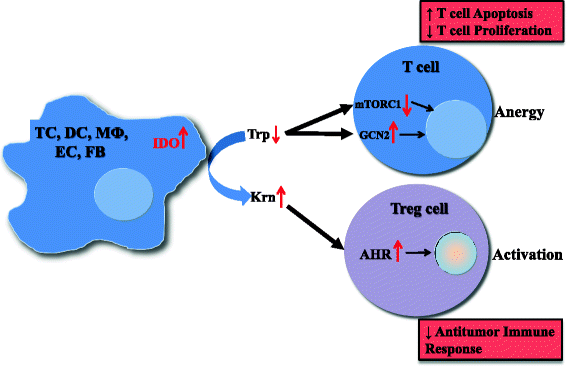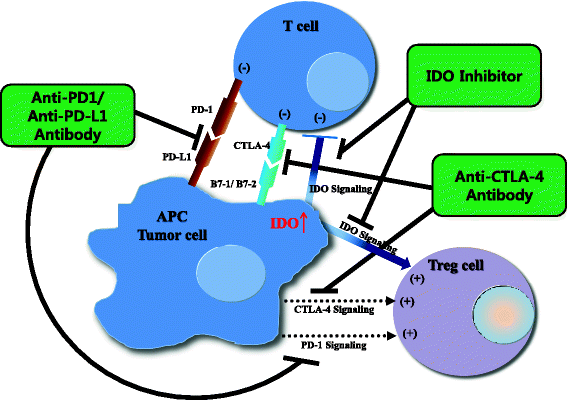Targeting the indoleamine 2,3-dioxygenase pathway in cancer
- PMID: 26674411
- PMCID: PMC4678703
- DOI: 10.1186/s40425-015-0094-9
Targeting the indoleamine 2,3-dioxygenase pathway in cancer
Abstract
Tumor cells escape the immune surveillance system of the host through a process called immune tolerance. Immunotherapy targets molecules that serve as checks and balances in the regulation of immune response. Indoleamine-2,3-dioxygenase (IDO) is an intracellular enzyme, which through the process of tryptophan depletion exerts an immunosuppressive effect, facilitating immune escape of tumors. This review summarizes our current knowledge on IDO expression in malignancies, the IDO inhibitors that are currently available and those under clinical development.
Keywords: IDO inhibitors; Immune surveillance; Immunomodulatory; Indoleamine 2,3-dioxygenase; Malignancy.
Figures


References
Publication types
LinkOut - more resources
Full Text Sources
Other Literature Sources
Research Materials
